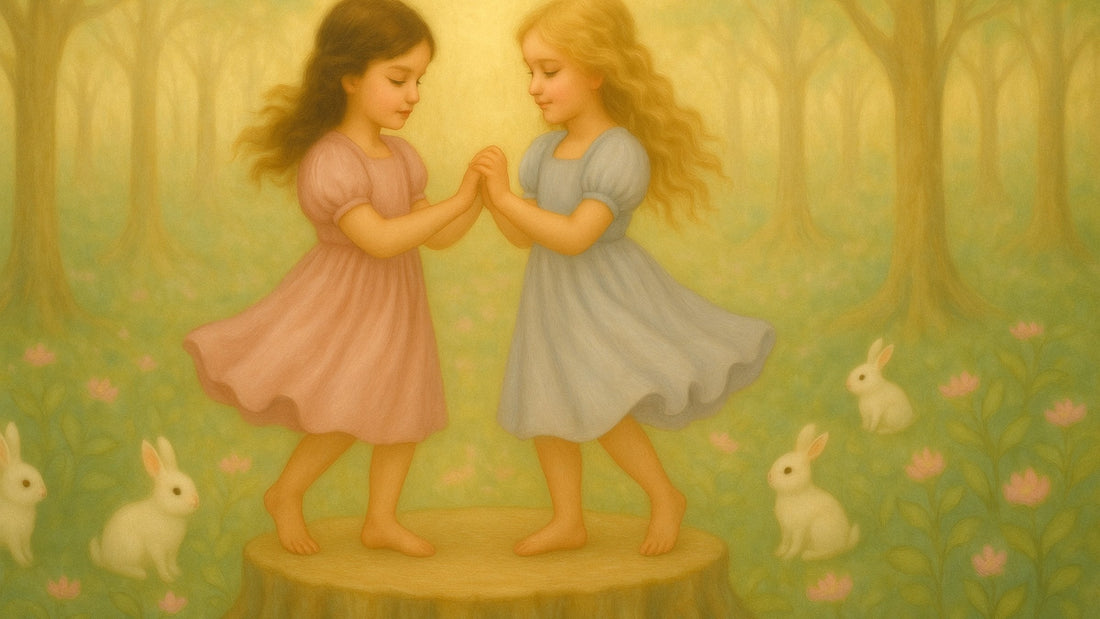
When Two Eyes Don’t Work as One
Share
Author: Hayley Martin
The Hidden Struggles of Binocular Vision in Children
In the heart of a classroom, where stories flutter through pages and pencils glide across paper, one child begins to lose her place. The words seem to dance, but not in a joyful way. They blur, skip, and jumble. She rubs her eyes, tries again, and wonders quietly if something is wrong with her.
But what if it’s not her?
What if it’s her eyes? What if her eyes are not working together as a team?
Welcome to the world of binocularity, a magical yet often-overlooked visual skill that helps both eyes work in harmony to create one clear image. When binocularity is disrupted, everyday tasks like reading, copying from the board, or catching a ball can feel confusing or exhausting. And far too often, these struggles are mistaken for behavior problems, attention issues, or learning difficulties.
Let’s pull back the curtain and explore this quiet challenge, and the gentle ways we can help.

What Is Binocular Vision?
Binocular vision is the ability of both eyes to work together as a team. Each eye takes in its own image, and the brain blends them into one single, clear picture. When this teamwork is strong, a child can see with depth, clarity, and ease.
But when binocularity is weak, when the eyes fall out of sync or struggle to coordinate, vision becomes a puzzle. The picture might blur. The child may see double. Or the eyes may grow tired trying to “force” the world into focus.
A Tale of Two Dancers: A Metaphor for Binocular Vision
Imagine your child’s eyes as two dancers on a stage.
- Binocularity is their rhythm, the graceful, invisible harmony that keeps them in time with each other.
- Eye teaming is how they move closer or farther apart, stepping together for a near task like reading, or stepping apart to look across the room.
- Tracking is their choreography, their ability to glide from left to right across a page or shift smoothly from book to board and back again.
When these dancers fall out of step, the performance suffers. The audience (your child’s brain) grows confused, and the dancer (your child) grows tired.
But the good news is that this dance can be relearned.
Signs Your Child May Be Struggling with Binocular Vision
Because binocularity problems often masquerade as other concerns, they’re easy to miss. Here are gentle clues to watch for:
- Complains of blurry or double vision
- Rubs eyes or squints while reading
- Covers one eye to focus better
- Struggles with reading fluency or loses place on the page
- Holds books very close
- Has poor depth perception (trips easily, avoids climbing or sports, difficulty catching a ball)
- Headaches or fatigue after close-up work
- Avoids puzzles, crafts, or homework
- Seems distracted, anxious, or unusually tired during schoolwork
These are not signs of laziness or disinterest. They may be signs of a deeper visual imbalance, one that can be addressed with compassion and care.

Why It’s So Often Missed
Here’s a little-known truth: most school vision screenings do not check for binocular vision. They might only test whether a child can read the letters on a chart from across the room. But binocularity is about how the eyes work, not just what they see.
Even some standard eye exams may not include binocular testing unless symptoms are specifically mentioned. That’s why comprehensive pediatric eye exams are so essential, especially before a child begins school.
How Binocular Vision Affects Reading, Learning, and Confidence
When a child’s eyes don’t work together, even simple tasks become a challenge. Reading requires sustained focus and constant coordination between both eyes. If that foundation is shaky, a child may:
- Read slowly or inaccurately
- Skip lines or reread words
- Avoid reading altogether
- Appear inattentive or struggle to comprehend what they’ve read
Beyond academics, poor binocularity can affect self-esteem. Children may feel different, inadequate, or “not as smart” as their peers, when in reality, their eyes are just working extra hard behind the scenes.
Hope on the Horizon: Gentle Treatments That Help
The good news is that binocularity can often be improved with the right support. Treatment options may include:
- Vision therapy: A series of guided visual exercises (like physical therapy for the eyes) to strengthen coordination and teamwork between the eyes
- Prism lenses: Special lenses that help align images between both eyes
- Reading glasses: Especially those prescribed for convergence issues during near tasks
- Lifestyle adjustments: Like more frequent breaks during reading or screen time
And of course, magical, confidence-boosting glasses, like those designed by Once Upon a Charm, can help transform the experience of wearing glasses into something beautiful and empowering. When a child feels proud to wear her frames, she’s more likely to wear them consistently and begin her journey toward visual harmony.
A Final Whisper
If your child is struggling, with reading, with attention, with seeming “clumsiness” or unexpected tears after school, trust your instincts. You are the keeper of her story, and sometimes, the smallest clues lead to the biggest transformations.
Help her eyes dance together again.
Book a comprehensive eye exam. Share your concerns with a specialist. And know that behind her sleepy eyes may lie a hidden world, waiting to come into focus, with just a little vision magic.
